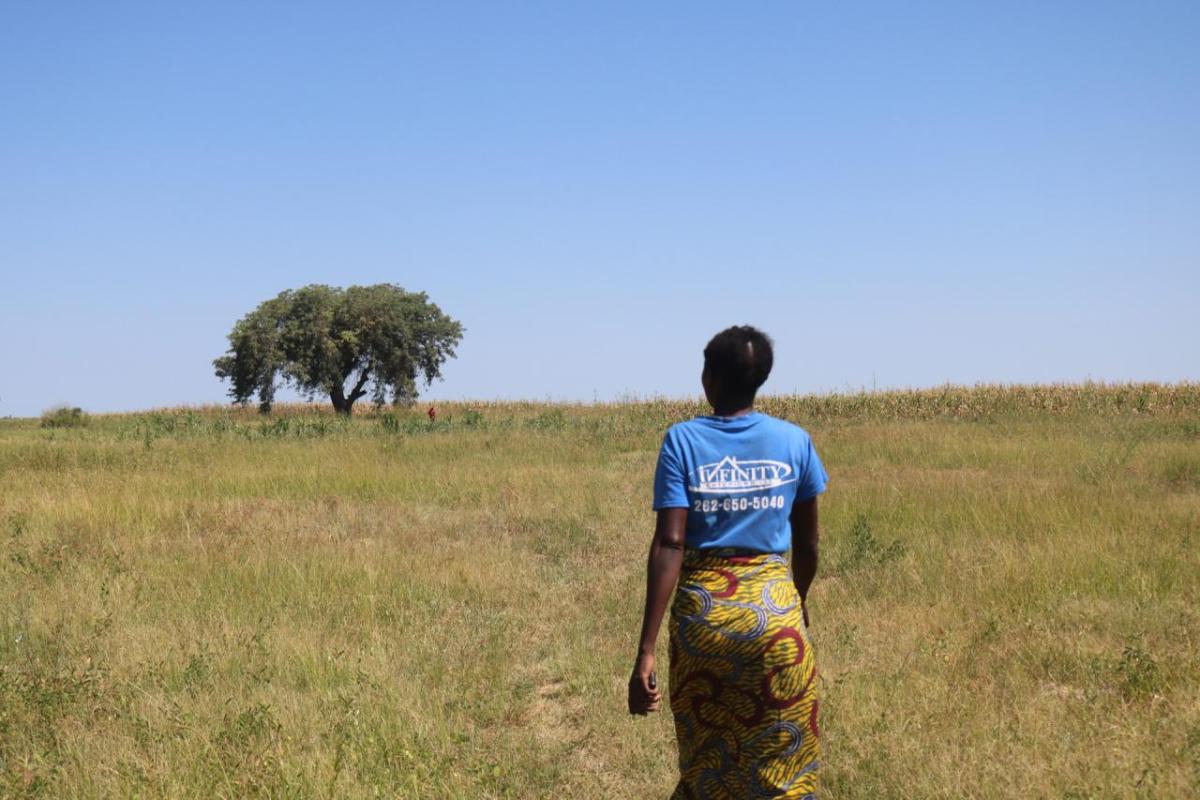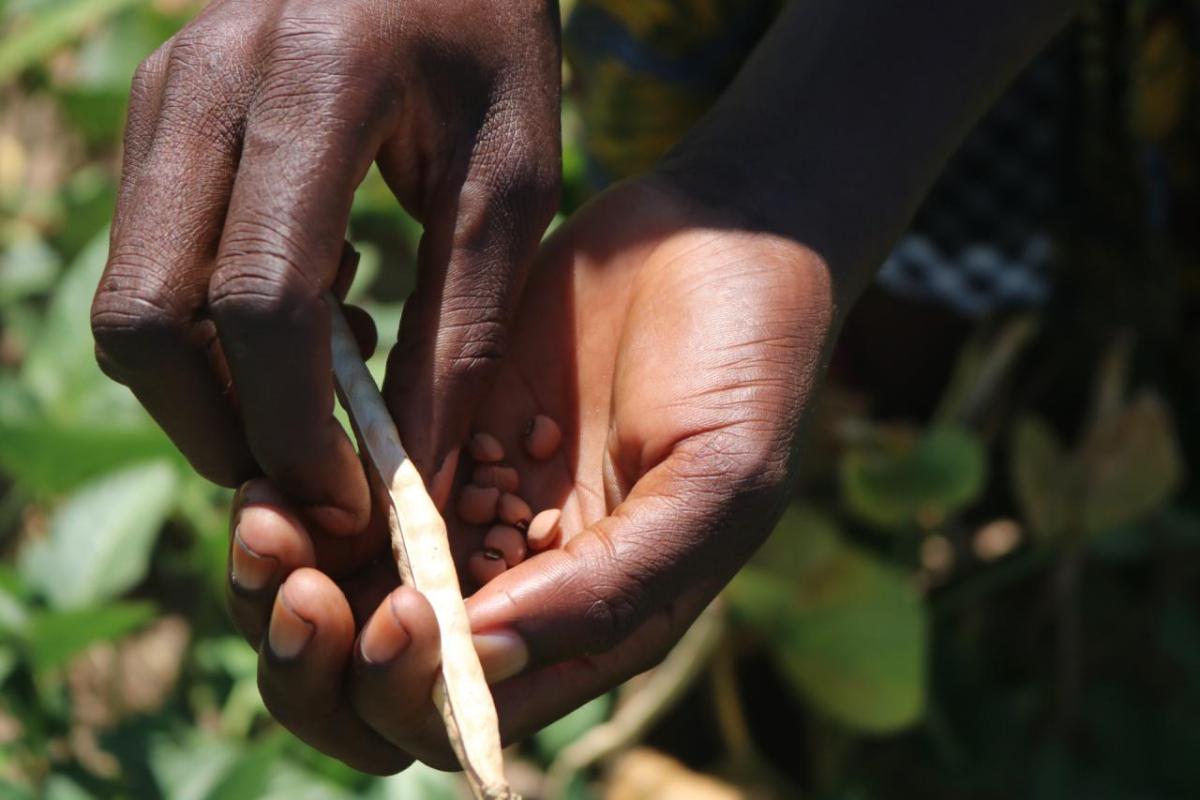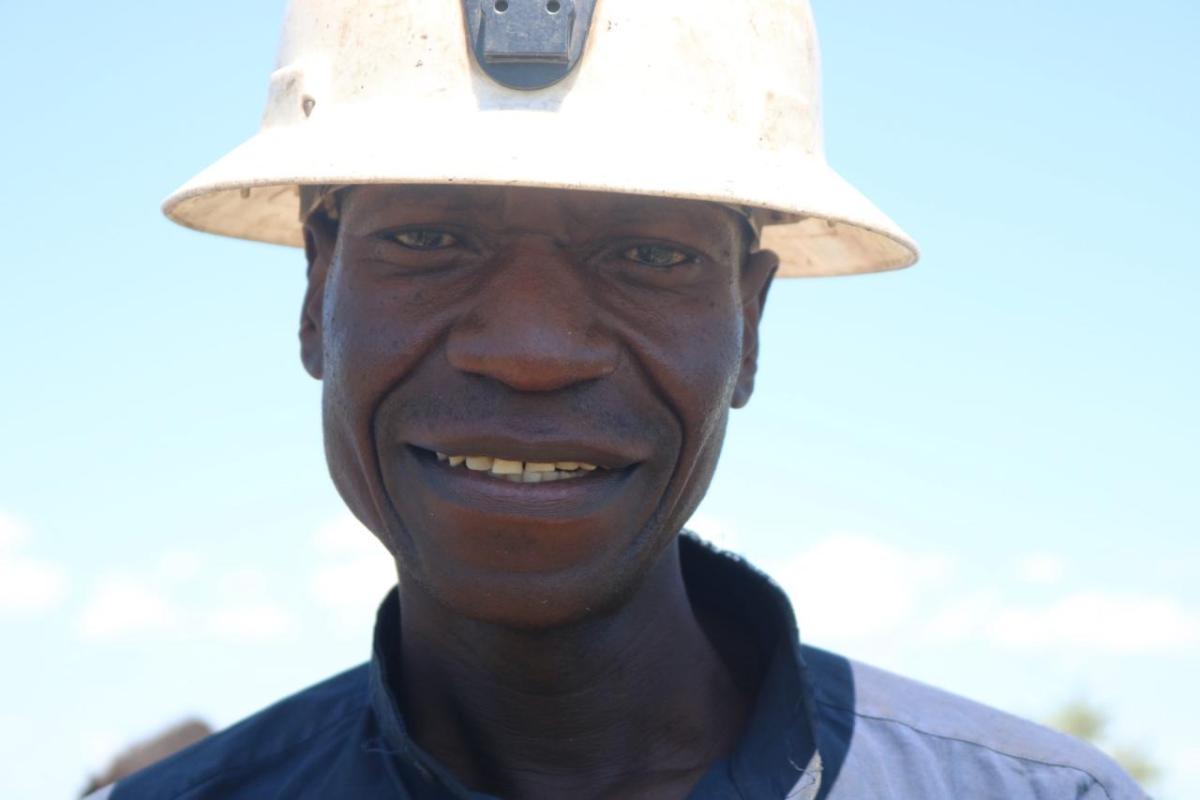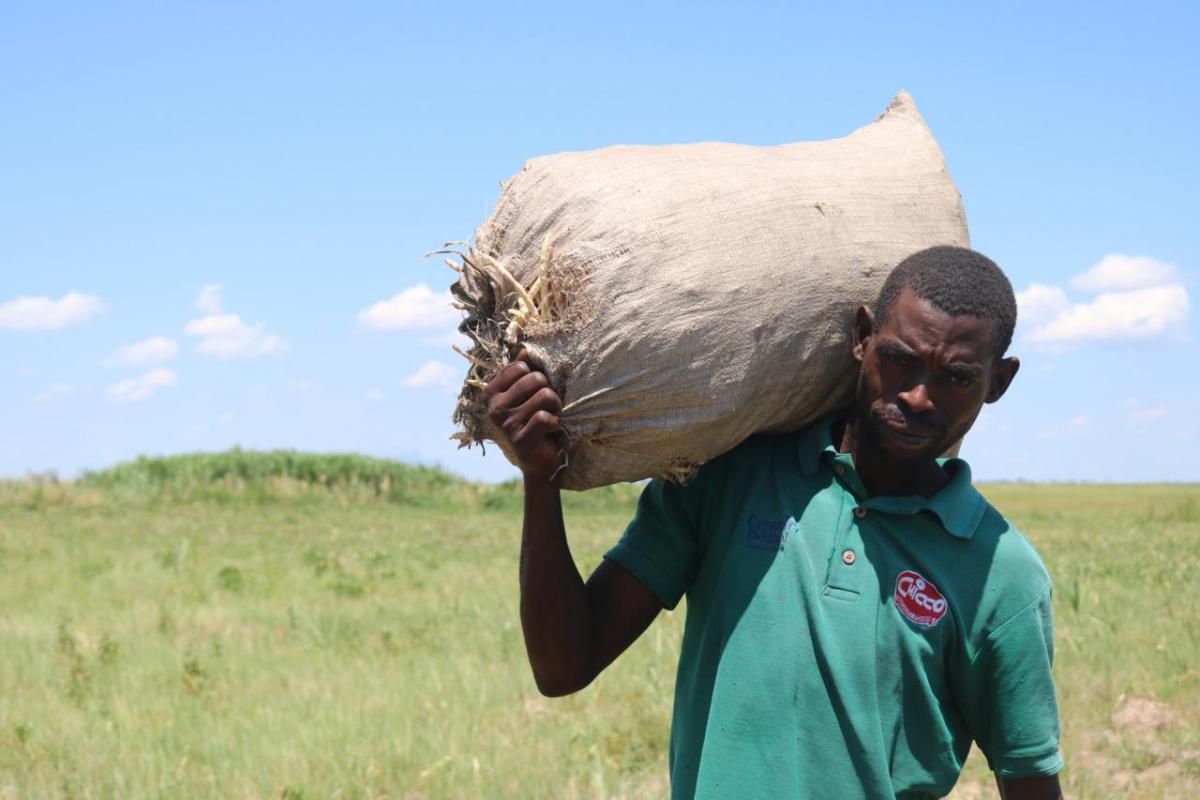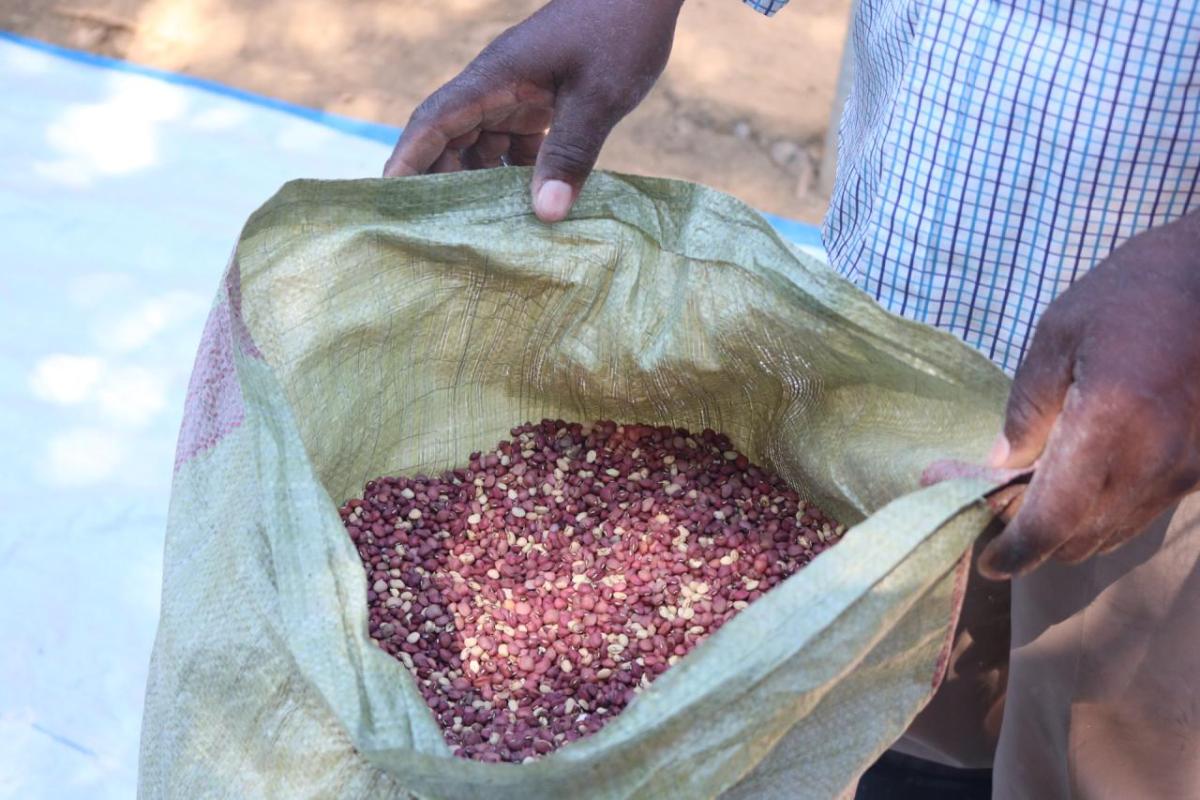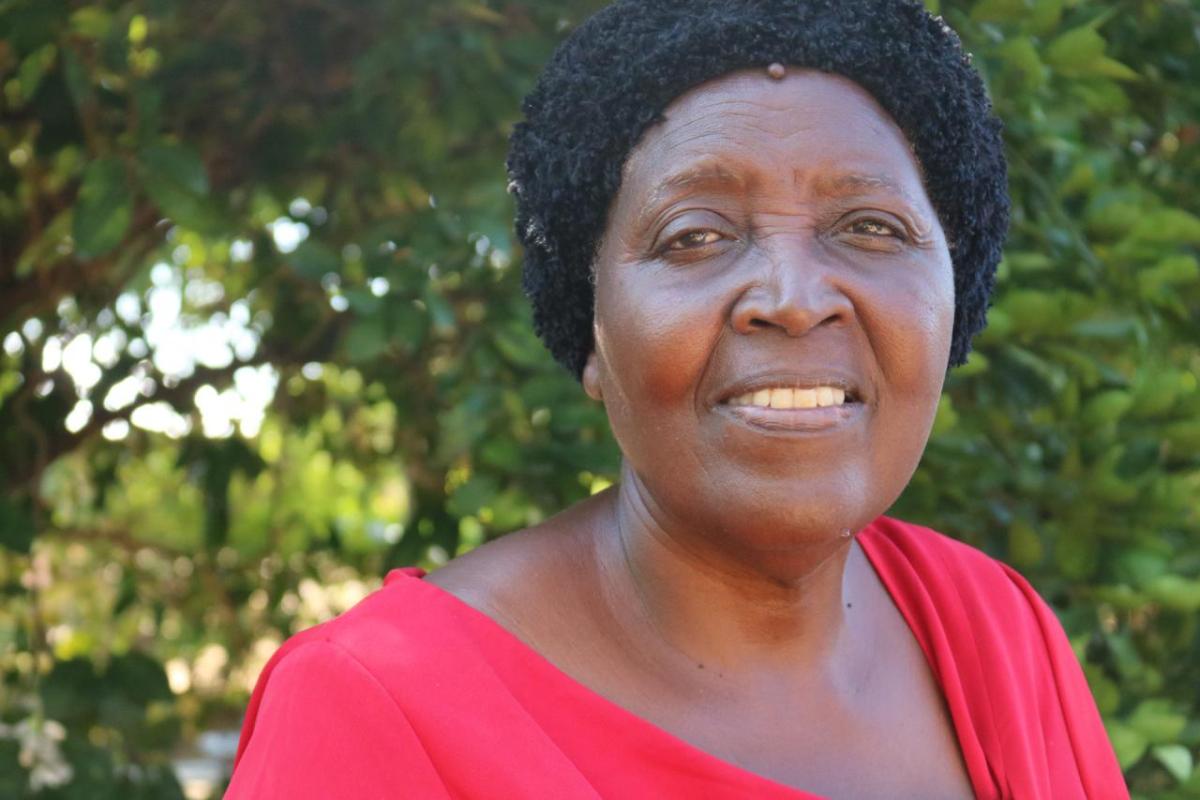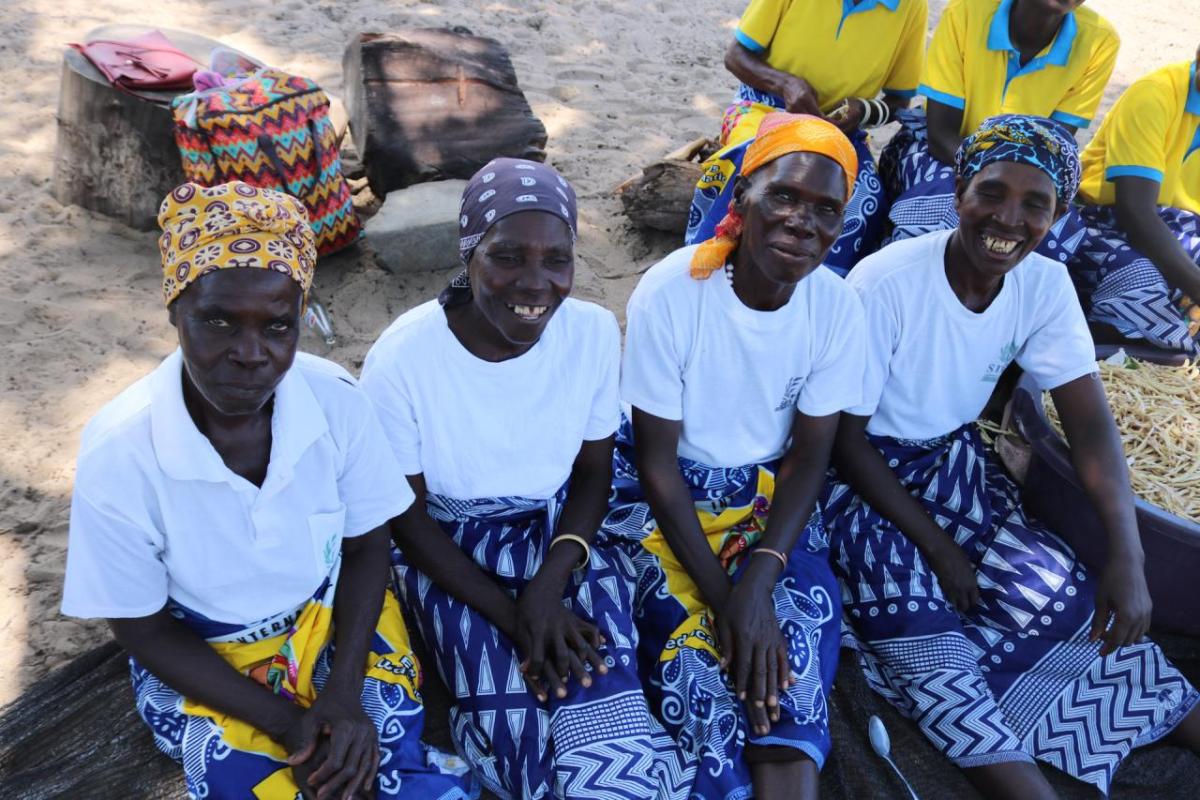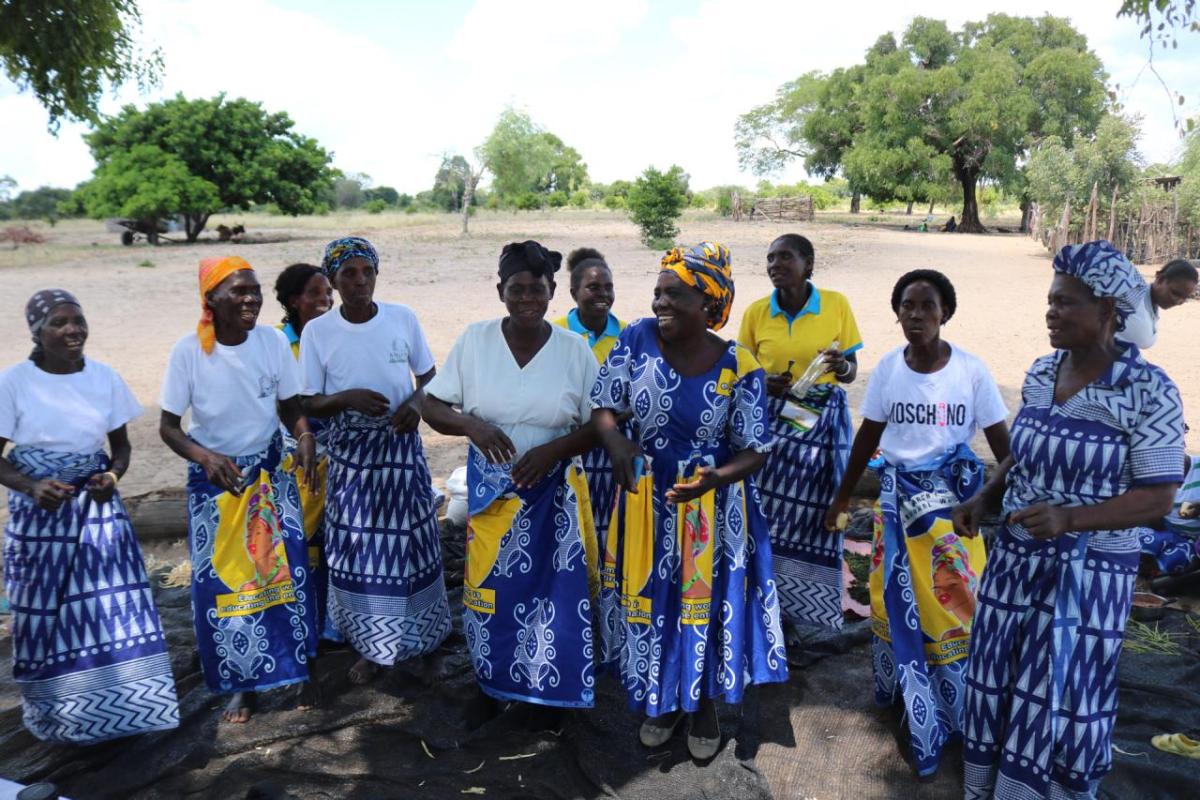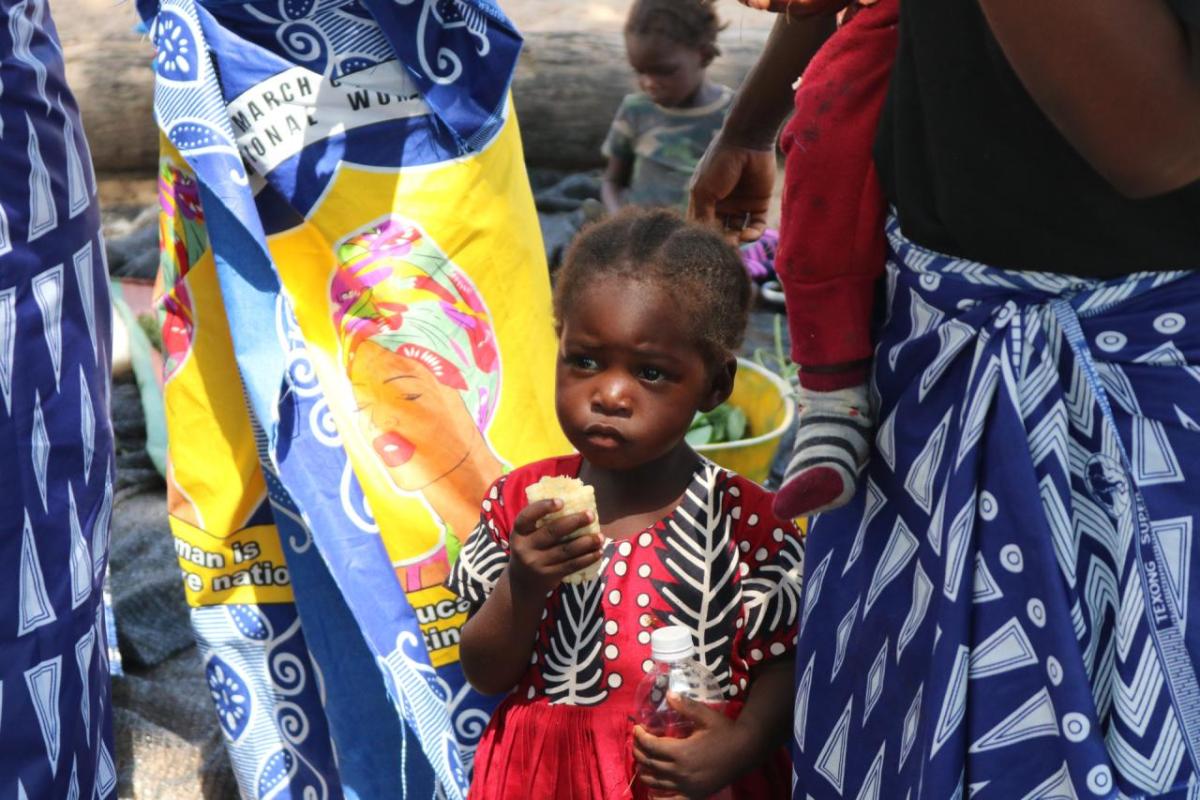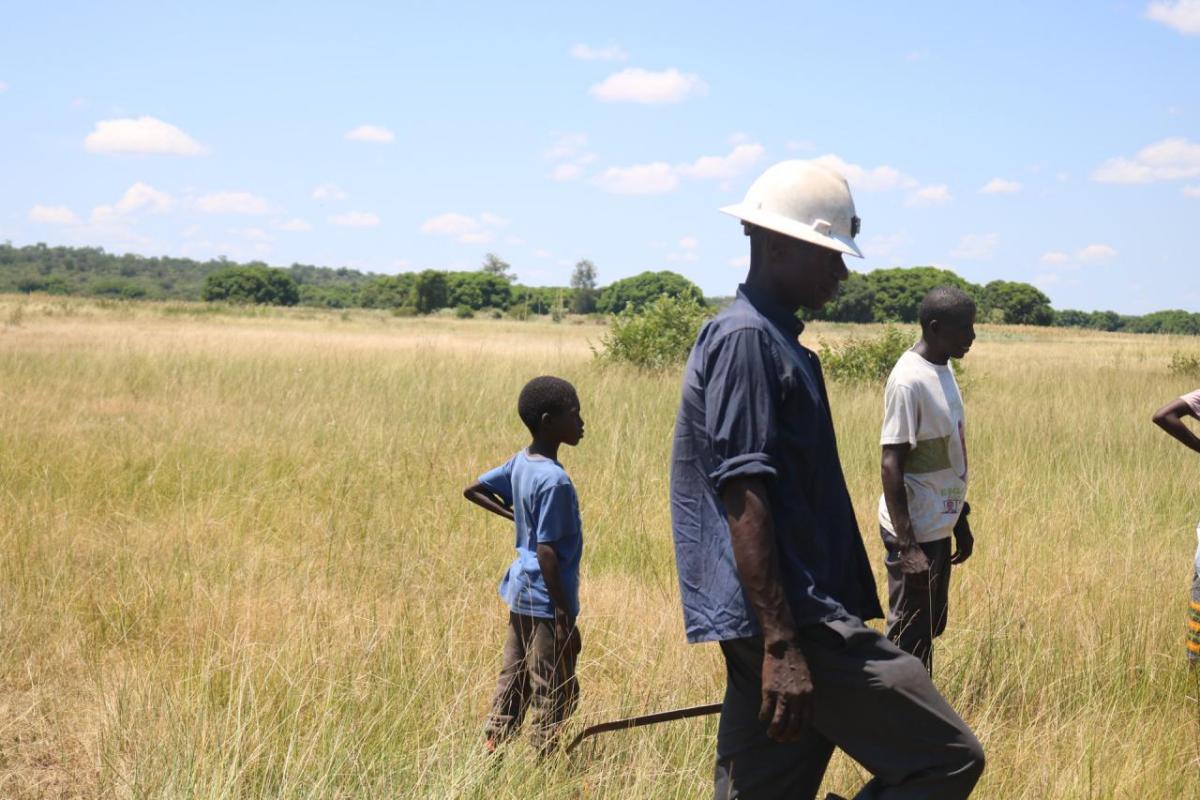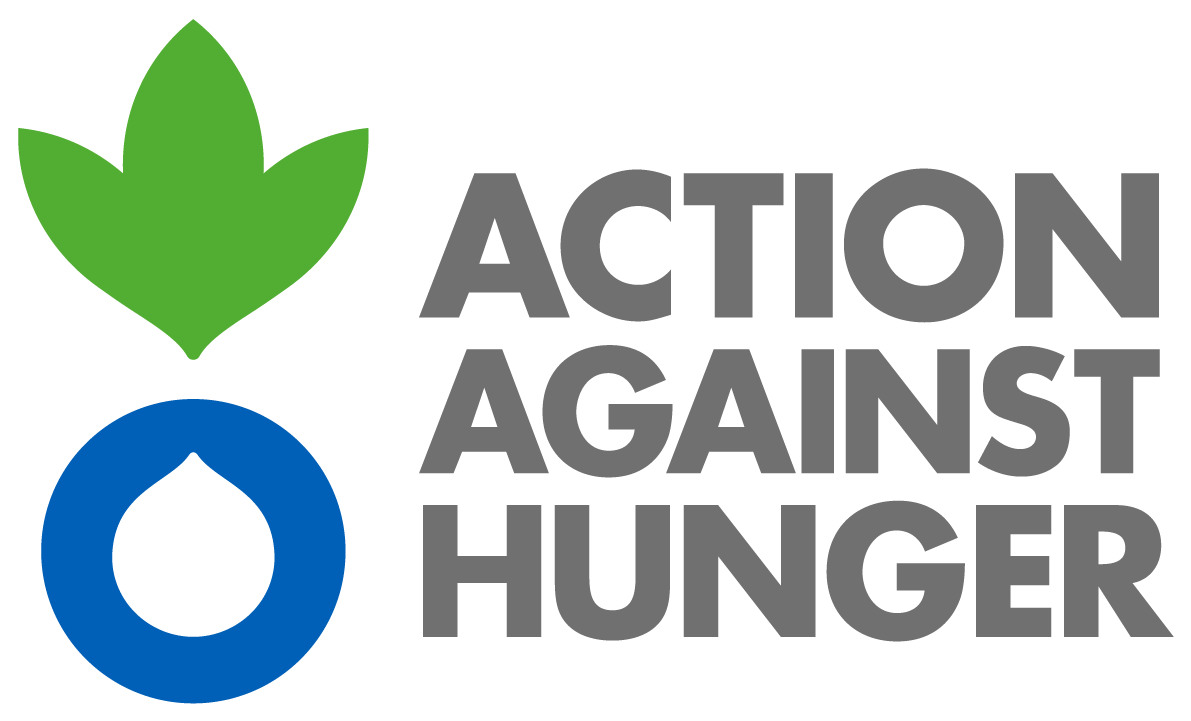Travel Logs: Senanga, Zambia
By Kenneal Patterson
In Senanga, Zambia, a crowd of farmers stare at a shriveled corn field. The leaves are wrinkled and falling apart, and what little remains is a withered echo of what once was. Most corn—one of the country’s main crops—has been destroyed by the recent drought, which was declared a national emergency by the president in February. With no harvest, no rain, and little money, Zambian farmers are facing a bleak, hot future this summer in the Western Province.
These anxieties are widespread in Zambia’s Western Province right now. Farmers of all ages, from teenagers to mid-70-year-olds, tell me that they’re facing unprecedented hunger. The crisis has only just begun. Some will have to survive the year with little more than a bag of beans for a ten-person family.
To give an idea of the magnitude of the situation, I’m reporting on site.
“In all my life in Zambia, this is the worst drought I’ve ever seen,” said Samuel Mwanza, one of our project officers.
Mwanza and his team sought to thwart the crisis through drought-resistant agriculture. Last fall, over 1,280 farmers enrolled in Action Against Hunger’s new project.
The aim is simple: provide training and tools for farmers to plant cowpeas (known in the United States as black-eyed peas). These climate-resilient crops can grow in hot, sandy soil, and need very little water to survive. They provide a healthy, protein-rich alternative to what many in Senanga eat—rice, nshima (lumped cornmeal), and in many cases, nothing at all. In fact, it’s not uncommon for families here to skip meals.
Farmers participated in Action Against Hunger’s trainings and received both the seeds and technical support. Throughout the fall, Mwanza and his coworkers guided farmers on when and where to plant. But despite the project’s success, the drought has posed a bigger threat than anyone could imagine.
Disaster struck early this year. Farmers looked upward, eagerly waiting for rain that never came. While the ground baked in 95-degree weather, only the cowpeas were left sprouting.
It’s far from enough. Although the cowpeas endured the drought far better than all other crops, farmers are harvesting three to four times less than they had originally hoped for.
Wednesday
6 a.m.: I woke up under a massive mosquito net in Mongu Country Lodge, a quiet motel in the heart of the Western Province’s biggest city. After quickly getting ready, I embarked on a bumpy hour-long drive from Mongu to Senanga, where I met Project Officers Namunji Mubita and Samuel Mwanza. Both officers briefed me on the drought: there is no end in sight.
“There’s a lot of mental anguish as people try to figure out how they’re going to survive,” Samuel said.
9 a.m.: Later that morning, I sipped a hot cup of instant coffee and munched on some dried mango strips as I prepared for the day’s travel.
The Zambezi River curled lazily behind us, the only flash of blue in an otherwise arid and grassy landscape. It’s surrounded by beautiful marshlands that, in a typical year, are flooded with deep waters and traversed by local boaters. Today, it’s completely dry.
Before long, it was time to get straight to the project site. But when you’re in such remote areas, it’s almost a rite of passage to face some hiccup. Action Against Hunger works in some of the world’s hardest-to-reach places—and they were truly hard to reach. Our car got stuck in a sandy embankment and it took at least half an hour to get it unearthed.
10 a.m.: The drive to the first farm was nauseating, the road twisting and turning over rough terrain. We first stopped at a local hospital, where we met with Memory. She had originally planned to meet us on her farm, but had to make a stop to check on her 15-year-old son, who is being treated for malaria.
Memory let us down to her fields, which sit in the middle of Lukanda Agriculture Camp, a community with a population of about 1,500. We’ve enrolled farmers across 19 of these camps. In Lukanda, about 100 farmers, including Memory, are enrolled.
It wasn’t long before dozens of other farmers crowded around the small field, watching as we ventured into the small cowpea bushes. Bright green and unassuming, these little bushes have enormous potential.
Most farmers say that the crop has been their saving grace.
Still, times are tough: “I was expecting a good harvest, but there’s nothing I can do now, because it’s a national drought,” said one farmer, 42-year-old Harriet.
Harriet must tend to seven people in her household, including herself, her husband, and five kids. Her youngest is only a year and half, and she struggles to feed the baby.
“Sometimes we spend the whole day without eating,” she said. “Sometimes we eat once a day.”
1 p.m.: There’s never a dull day with Clare. The elderly farmer, flanked by her three sisters, greeted us joyfully when we arrived at their field. Clare was wearing a green jumpsuit studded with a homemade pin: a piece of paper where she had handwritten “Action Against Hunger.”
She couldn’t contain her excitement when I gave her my own Action Against Hunger pin, and immediately put it on.
Clare’s harvest was promising: “We are very happy, because we never expected anything like this in our lifetimes,” she told me.
3 p.m.: Sitwala is a small farmer living in a thatched hut at the edge of a yellowed corn field. He is one of the lucky few that planted early, and the small amount of rain was just enough for him to grow several bags of cowpeas.
Last year, cowpeas sold at a market rate of around 3,000 Kch per 50kg bag, or about $120 per 110 pound bag. That means if Sitwala sells about 10 bags, which is likely, he’ll make around $1200. Since 60% of Zambians live on less than $2 per day (and for these farmers, it is often less), Sitwala’s harvest will more than double his annual income.
7 p.m.: Back at the hotel, I watched as the sun set peacefully over the sky and ignited the horizon. I ordered a traditional Zambian meal for dinner—nshima, cooked greens, rice, and a tangy red gravy. That same night, many farmers would be eating nothing at all. In the coming months, many more will continue to face desperate situations.
Thursday
8 a.m.: Mrs. Ilwange is a kind, 63-year-old woman who lives in a small house in Senanga with her husband. Most of her children are grown and scattered, but the couple and their grandchild share a house with two other friends.
To the left of the house, a small side building holds the couple’s storage, including a cool room filled with freshly dried cowpea pods. In the front yard, a scale sits in front of ten heaping bags of shelled cowpeas.
Early on Thursday morning, all five members of the Ilwange household were gathered to weigh the legumes.
“The drought has been very difficult, very,” Mrs. Ilawange told me. “We pray for a few rains. Knowing the cowpeas are drought resistant gave us the motivation to go ahead.”
12 p.m.: A typical day in Moonde’s life is never easy. Each morning, she wakes up early to help her husband wash up before preparing his breakfast. He’s elderly and disabled, with little movement in his feet, so she has to oversee the household. She tends to her cowpea field, stopping by throughout the day to weed and scare crows away. At night, she’ll use whatever nuts she has and grind them into a mush for dinner.
“I’m looking after everyone in the household,” she said. “I encounter many challenges—including labor costs and medical services, since my husband is disabled. Now, we must face the drought.”
Moonde was only able to harvest a fraction of what she planned for.
3 p.m.: The day culminated with a beautiful send-off—a heartwarming and surprise performance from the ladies of Kaande Camp.
Led by the 62-year-old Mrs. Makina, a crowd of women began dancing, chanting, and singing in Lozi, the regional language. They clapped and twirled in their bright blue skirts, each with the matching words “Educating Women Means Educating the Entire Nation” printed on them. Kaande is a completely women-founded and women-run community. Many are widows, but they’re not all old: young mothers danced beside grandmothers.
Mrs. Makina had prepared a feast for us. A table was laid out with cornmeal cake, pumpkin fritters, okra relish, a bowl of caterpillars, nshima, and the most delicious of all: sausages made completely of cowpeas. It took her hours to cook the food.
The community welcomed us with what little food they had. Most are facing the long summer months with absolutely no food or money stored away.
“We used to see rain as early as October,” said Mrs. Makina. “Now, there has been very little rain and it’s March. Children are going to school on an empty stomach with nothing to eat.”
Action Against Hunger in Zambia
Action Against Hunger’s climate resiliency program in Zambia is designed to mitigate and prepare for the impact of climate change over the next ten years. In the Western Province, Action Against Hunger is building a climate-smart network that will help farmers grow drought-resistant crops like cowpeas.
Our teams work alongside community members to strengthen irrigation systems; facilitate the planting and harvesting of crops; and build awareness around resource management, food preservation, water storage, and more. Staff will also work to strengthen the local economy and connect farmers to broader financial networks.
**
Read the full story here: Travel Logs: Senanga, Zambia | Action Against Hunger
Read more about the project here: How One Legume is Transforming Lives in Zambia’s Western Province | Action Against Hunger
Photos and story by Kenneal Patterson

